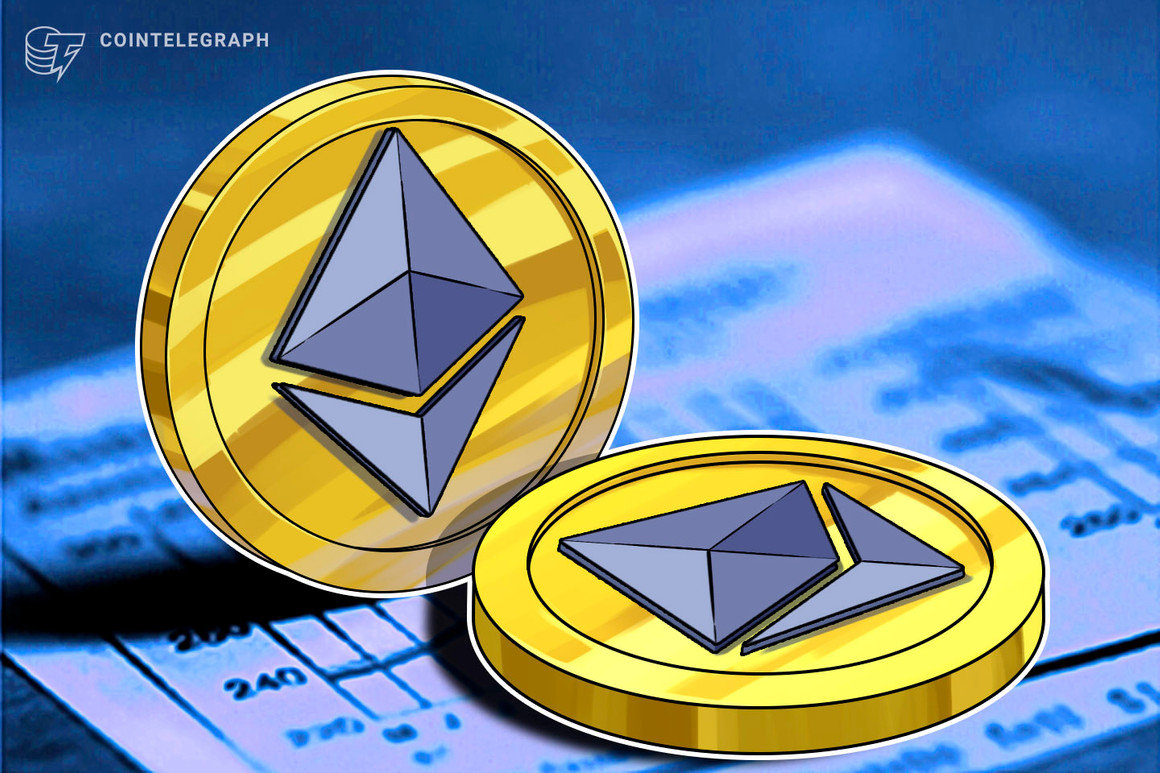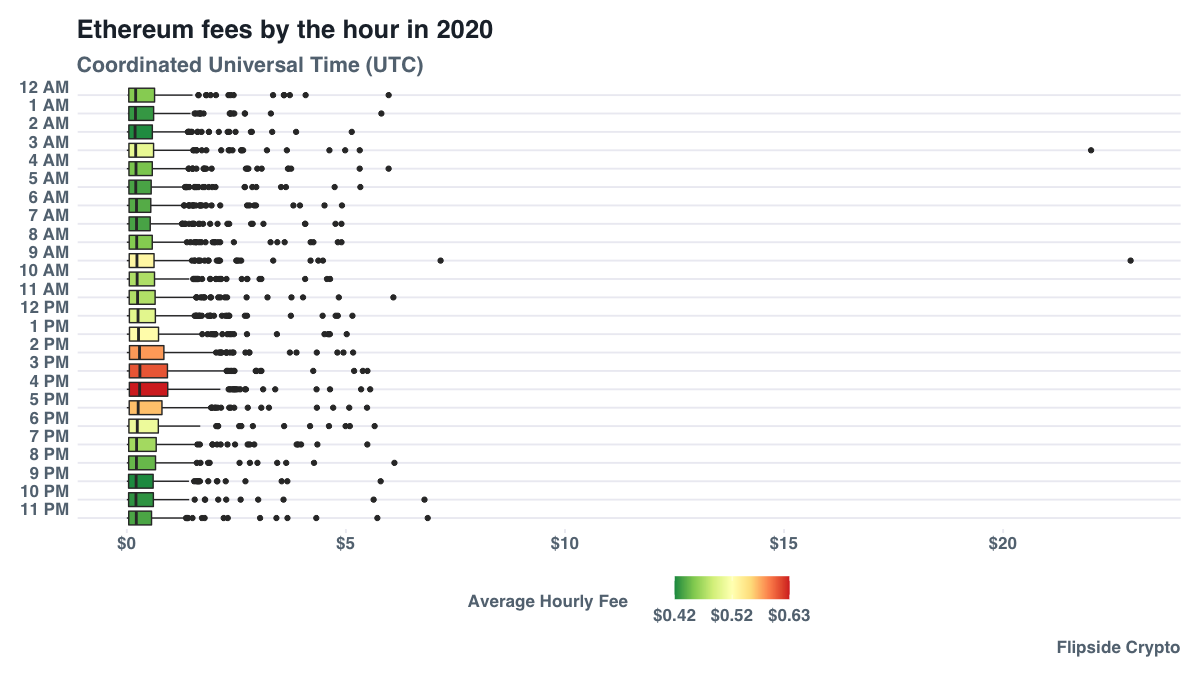
Anyone who has used Ethereum in 2020 knows the frustration of paying for gas, the measure that represents a transaction’s computational weight. With gas prices sometimes rising up to 100 to 200 gwei, a unit equal to one billionth of an Ether (ETH), many users are finding themselves priced out of the action.
While only a wide adoption of layer-two scaling solutions and the arrival of sharding can truly fix the situation, a few tricks can still help save some money when using the blockchain.
The easiest trick is simply avoiding making transactions during certain times of the day. New research from Flipside Crypto shows that the Ethereum blockchain shows quite specific patterns of congestion that a savvy user can exploit to pay less in gas.

The analysts sampled average fees on Ethereum starting from Jan. 1, 2020. The bars represent a median where most of the data points are located, while dots represent outliers.
The chart shows that, on average, the Ethereum blockchain is busiest from 1 PM UTC to about 6 PM UTC, corresponding approximately to the early U.S. trading session between 8 AM EST and 1 PM EST. This is likely no coincidence, as during this time window both Europe and the U.S. are fully awake and at work.
By contrast, the least busy period is between 9 PM UTC and 11 PM UTC. This also makes sense — The U.S. workday is coming to a close, Europe is getting ready to sleep, while in Asia it is still very early in the morning. In addition to lower average values, the evening UTC period also sees fewer outliers.
The information is useful to wait out periods of high activity, or to send a lower fee transaction with the confidence of knowing it will be confirmed in a few hours. The latter trick is only useful for low-priority transactions like token transfers, while it is discouraged for certain DeFi protocols.
Most notably, decentralized exchanges are usually a poor target for low-priority transactions. Slippage protection settings could mean that by the time the transaction is confirmed, the price has naturally moved from the initial point and the transaction fails — completely wasting precious gas. Some DeFi protocols also have internal checks to reject transactions older than a few minutes.
Beyond simply waiting, some situational tricks can also help vastly decrease the cost of gas. The Chi Gas Token, for example, lowers the total gas consumed by a particular transaction. The token acts as a discount storage mechanism — users should mint Chi when gas is cheap and use it when fees rise. Chi can also be purchased like any other token.
Depending on the user’s needs, certain solutions may help completely avoid high gas costs. Several layer-two solutions like Zk Sync, OMG’s Plasma or xDai offload transactions to another ledger, allowing virtually free token transfers after an initial setup cost. For trading, Loopring and DeversiFi offer non-custodial trading with essentially zero gas fees.
Such alternative platforms are seeing lower adoption and may not be suitable for everyone, but they are also the only realistic pathway towards reducing congestion once and for all.
Title: Here are the best and worst times of the day to use Ethereum
Sourced From: cointelegraph.com/news/here-are-the-best-and-worst-times-of-the-day-to-use-ethereum
Published Date: Tue, 26 Jan 2021 18:24:14 +0000
Did you miss our previous article...
https://trendinginthenews.com/crypto-currency/bored-with-bitcoin-the-btc-bull-run-is-about-to-return-this-indicator-says






